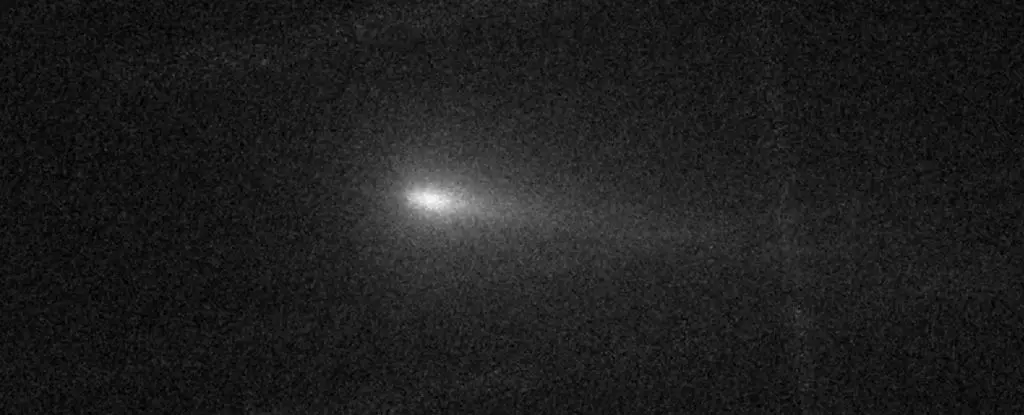Comets have long fascinated humanity, often appearing as harbingers of change or signs from beyond our world. Among these celestial wanderers is the recently discovered C/2024 S1, which, despite predictions of a dazzling appearance this Halloween, is facing a dramatic and untimely disintegration. Coming off the heels of its September 27 discovery, C/2024 S1 was classified as a Kreutz sungrazer—a type renowned for their close encounters with the Sun. Unfortunately, it seems that this particular comet, after billions of years of existence, is breaking apart just as it approaches its closest point to our star.
Many astronomy enthusiasts had anticipated October 28, 2024, as the date marking C/2024 S1’s perihelion—its closest approach to the Sun at just 1.2 million kilometers (approximately 750,000 miles). Predictions suggested the comet could become bright enough to be visible with the naked eye, perhaps even outperforming Venus in brightness. However, as the days went by in October, the comet exhibited bewildering signs of instability. Images captured in this period show initial brightening, propelled by explosive outbursts that hinted at underlying disruptions within the comet’s structure.
Nevertheless, the excitement soon turned to disappointment as observers noted that the comet had dimmed significantly, its nucleus appearing to disappear entirely. The images taken by amateur astronomer Martin Mašek further confirmed these indications of fragmentation, revealing that the comet was not just fading from view; it seemed to be disintegrating altogether.
Understanding why C/2024 S1 might be falling apart requires delving into the composition and behavior of comets. These celestial objects mainly consist of ice, dust, and other volatile compounds formed in the deep frigid regions of the Solar System. As a comet approaches the Sun, the heat accelerates the sublimation of ice, transforming it directly from a solid to a gas. This process generates enormous pressure on the comet’s structure, contributing to phenomena like outbursts and fragmentation.
The rapid disintegration we are witnessing with C/2024 S1 could also be attributed to the increase in rotation speed—potentially accelerating under centrifugal forces as gases and dust are expelled. This kind of behavior is not new; the Hubble Space Telescope previously documented similar instances, most notably with Comet C/2019 Y4 back in 2020. The mechanisms at work remain a subject of ongoing research, as they intertwine chaos, beauty, and the intricate dance of celestial mechanics.
The fate of C/2024 S1 is not entirely unique in the context of cosmic history. It is widely believed that all Kreutz sungrazer comets, including C/2024 S1, are remnants of a larger entity—the Great Comet of 1106 CE. This powerful comet, upon its journey around the Sun, shattered into multiple smaller fragments. The legacy of that historic event continues to echo through the orbits of these smaller comets, with each providing new opportunities for observation and study as they approach the Sun.
The disintegration of C/2024 S1 serves as a poignant reminder of the impermanence inherent in celestial phenomena. Although the sights may not meet the initial expectations of a grand performance in the night sky, the sheer chaos of its breakup offers a unique spectacle for astronomers. As the comet fades, the remnants—whether a fragmented nucleus or a sweeping tail of gas and dust—may still create visual drama against the backdrop of the cosmos.
For avid stargazers, the current scenario surrounding C/2024 S1 is a mixed bag of hope and disappointment. While its bright nucleus seems to be slipping from our grasp, the potential for observing its tail continues. There remains a chance for a portion of the nucleus to survive the close encounter with the Sun, perhaps leading to sightings of a curved tail even in the absence of a bright head.
As we wait for the comet to pass perihelion, the Southern Hemisphere may still offer opportunities for observing C/2024 S1 through binoculars or small telescopes. As the comet continues its journey, if it weathers the turbulent encounter with the Sun, Northern Hemisphere viewers may eventually catch a glimpse of it post-perihelion.
In the end, the unfolding drama of C/2024 S1 serves as an eloquent reminder of nature’s unpredictability and the transient beauty of celestial phenomena. With bated breath, we shall continue to watch, each moment in this cosmic ballet holding the potential for awe and wonder. Happy hunting!


Leave a Reply